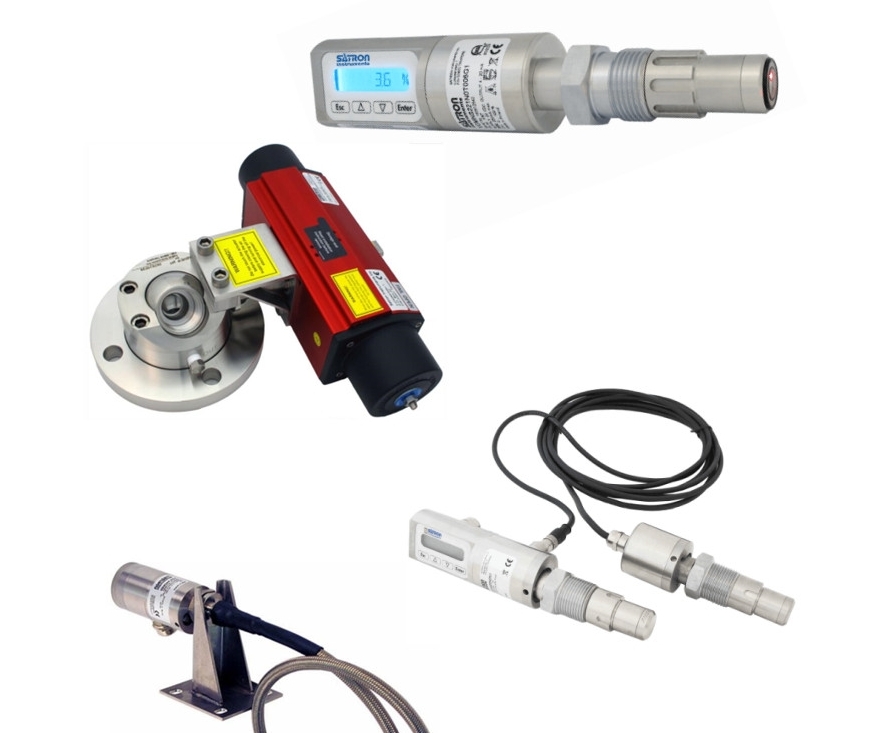



产品描述
ST5484E-151-1482-00振动变送器鸿泰顺达产品稳定性好
ST5484E-151-1482-00振动变送器鸿泰顺达产品稳定性好
The ST5484E is a self-contained seismic velocity transmitter that
incorporates a piezoelectric accelerometer, signal integrator, RMS
peak detector, and a 4-20 mA signal conditioner into a single
package. It can be mounted directly on a machine case or bearing
housing without intervening signal conditioning equipment. The
amplitude of the integrated acceleration (velocity) signal is converted to a proportional 4-20 mA signal compatible with industrial
process control instrumentation such as PLCs, DCSs, and SA
systems that can provide trending and/or alarming capabilities for
a simplified vibration monitoring strategy.
When the flying lead or terminal block connector options are
chosen, the transmitter does not need a separate environmental
housing and can directly accept conduit. To reduce installed cost,
it can be used with barriers for intrinsically safe installations, or
wired directly to explosion-proof conduit fittings for explosionproof installations.
Need A Local Display?
When continuous, local indication of vibration levels is required at the transmitter, the
Metrix ST5491E provides these capabilities.
Its sensing and transmitter elements are similar to
the ST5484E, but it includes a convenient 2½ digit LCD
display in an integral conduit elbow and is rated for use
in temperatures from -10o
C to +70o
C. Refer to Metrix
datasheet 1004598 for ordering information and detailed specifications.
A vibration transmitter may be appropriate in applications where
a stand-alone monitoring system may not be warranted.
The ST5484E handles general-purpose vibration measurements
on a wide range of rotating and reciprocating machinery with rotative speeds between 120- and 6,000-rpm. Seismic measurements are suitable for machines with rolling-element bearings
because shaft vibration in such machines is usually transmitted
directly through the bearing to the bearing housing without substantial damping or attenuation. Seismic transducers can also
measure vibration that does not originate at the shaft, such as
bearing-related wear and defects, footing/foundation problems,
piping resonances that are coupled to the machine, etc.
Why Measure Velocity?
Acceleration and displacement levels are heavily influenced by
the frequencies at which the vibration is occurring, while velocity
levels are much less influenced. Thus, although acceleration,
velocity, and displacement measurements are inter-related mathematically, seismic velocity measurements tend to be more consistent over a wide range of frequencies than either displacement
or acceleration. Consequently, broadband (sometimes called
“overall” or “unfiltered”) velocity measurements are appropriate
for monitoring many machines as a reliable indicator of damaging vibratory energy, with the notable exception of machines with
fluid-film bearings, which are usually better addressed by shaftobserving proximity probes.
Casing displacement is not a practical measurement to make
directly and is typically just an integrated seismic velocity measurement. As such, the primary decision when selecting a seismic sensor will usually be whether to measure casing velocity or
casing acceleration. As noted above, casing velocity will often be
more appropriate because it tends to be a more reliable indicator
of damaging vibratory energy over a broad frequency spectrum
for low- to medium-speed machinery.
Flying Leads
(Option D=0, 1, 5, or 6) (2-wire
shown; 4-wire also available)
2-Pin Terminal Block
(Option D=2)
4-Pin Terminal Block
(Option D=3)
0598
O

| 1 | 振动变送器\ST5484E-156-3182-00 | 0001/ | 2 | |||
| 2 | 转速探头\7MH71460GAO-24VDC-50mA | 0001/ | 1 | |||
| 3 | 振动变送器\ST5484E-151-1482-00 | 0001/ | 2 | |||
| 4 | 模拟量输入模块\D2011M | 0001/ | 1 | |||
| 5 | 一体化防爆振动变送器\HZ-892A-EX | 0001/ | 5 | |||
| 6 | 终端模块\750-600 | 0001/ | 5 | |||
| 7 | 模拟量输入端子板\D2010M-010 | 0001/ | 1 | |||
| 8 | 转速探头\NCN4-12GM35-N0-V1 | 0001/ | 2 | |||
| 9 | 振动变送器\ST5484E-151-1482-00 | 0001/ | 2 |
手机网站
地址:北京市 海淀区 清河街道 西三旗环岛东南
联系人:王经理女士(销售经理)
微信帐号: